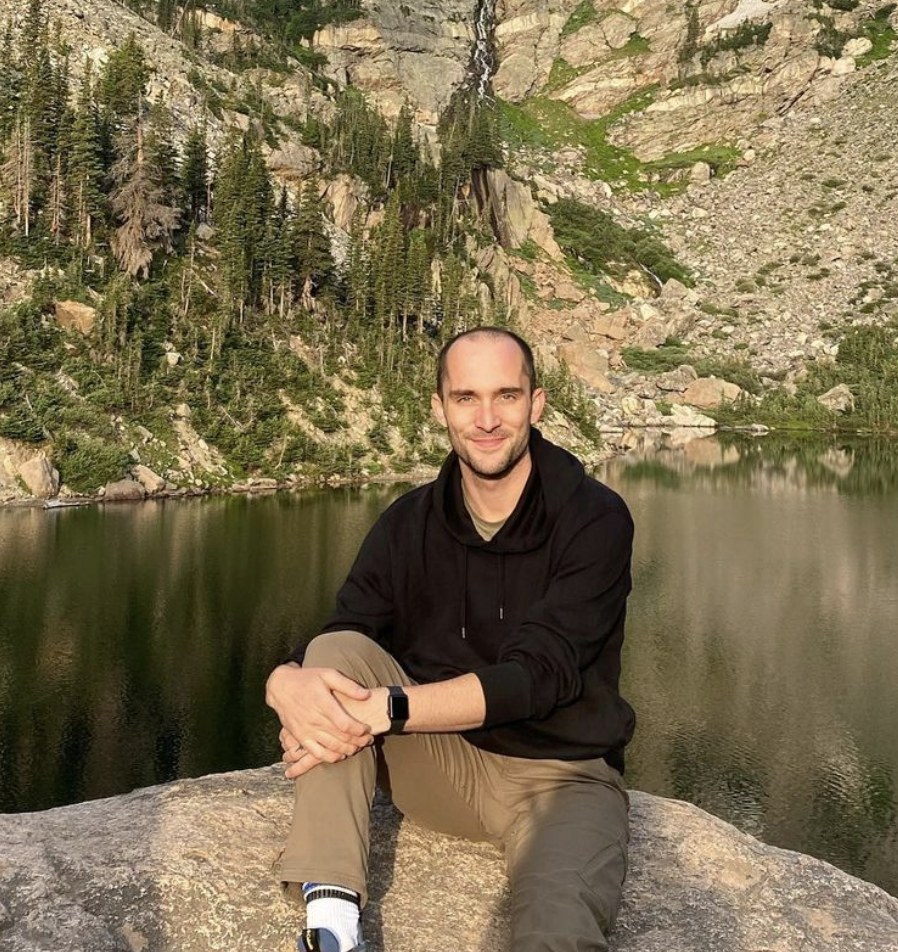“Mountains are huge contemplatives. They are there and they are in the presence up to their necks and they are still in it and with it and within it.” This is how author, poet, and philosopher, John O’Donohue talks about the wonder of landscapes such as those that surrounded us at Christian Community Camp last week. 49 of us from the church community recently returned from a week in Estes Park, Colorado, for the 50th annual Community Camp. We spent a week hiking, resting, hanging out as a community, and reflecting through Vespers services each night. During Vespers, we were inspired by the words of O’Donohue and knew exactly what he meant in his remarks about the mountains in his book, Walking in Wonder.
When you’re outside in a place like the mountains of Colorado, the wonder of the natural world feels almost too effervescent for words. However, this sense of mystery is not limited to places with a breathtaking mountain view. Though the veil feels thinner in some places, the “presence” we feel when we sit on the top of a mountain is actually always with us. Wonder is more than a fleeting feeling we only really encounter outside of our daily life; wonder can be a spiritual practice of being open to the miracle and mystery of life, everyday.
Our evening Vespers services considered how we might continue seeking the wonder that we so easily experienced while we were in Colorado today. As we reflected on our moments together, we looked at stories in the Gospel of Matthew that take place on a mountain. It turns out that Jesus had many moments on a mountain himself. Though he was not leading contemplative church retreats, his moments on the mountain were stories of wonder that showed us ways to see how wonder can be suffused in our regular lives.
There’s the moment on the mountain in which a small collection of bread and fish transforms into a miraculous meal that feeds a crowd of thousands. After reading that story, we wondered where God might be inviting us to find abundance in our own lives, even where we have been told things are scarce.
There’s the moment on the mountain in which Satan tempts Jesus, questioning his call as a “Son of God” and trying to get Jesus to use his God-given power to twist the world’s resources into tools of domination. After reading that story, we wondered where God might be showing us how we can practice “power with” the world instead of “power over,” choosing harmony and cooperation over coercion and force.
There’s the moment on the mountain, too, in which Jesus teaches that the “peacemakers … will be called ‘sons of God,’” the same title Jesus uses for himself. After reading that story, we considered, if God was up to something in Jesus, God could be up to something in us, too.
The last moment on the mountain that we read was the story of Jesus’ transfiguration. This is another religious term with a meaning about which many people wonder. The word often translated as “transfigured” may be literally read as “metamorphosed”— the story goes that Jesus took a few of his closest followers up to a mountain at night by themselves, when Jesus’ figure changed and his clothes and skin shined with a heavenly light. At the same time, apparitional forms of the prophet Moses and Elijah show up for a moment as a voice booms from heaven, saying “This is my son; listen to him.”
Jesus’ metamorphical experience on the mountain is more than a metaphor for something that was true about Jesus. At the end of this story, the vision dissipates, and his few disciples are left sitting down on the mountain with just Jesus. They’re afraid of what they’ve seen and heard, but Jesus invites them to stand up and to not be afraid. The point of the Transfiguration narrative is not to reify some remote experience of God that these few people got when physically present with Jesus on the mountain at the end of his story in Matthew. Rather, the transfiguration took this religious imagery, rife with reference to earlier Jewish stories of Moses encountering God on Mount Sinai, and invited Jesus’ followers to see the same transfiguration within them.
The very presence of God shines with and within each of us and every space in which Life creates and animates our world. Jesus’ stories on the mountains helped illustrate the wonder of sacred presence that’s with us all the time, not just in the remote beauty of the Rocky Mountains. Where are you most reminded of the miracle and mystery of Life? Where are the ruts from which you have to remind yourself to step out, remembering the wonder of what’s present around and within us all the time? Where can you sense Christ reaching out an arm to you, inviting you to stand up and not be afraid? Indeed, God everyday invites us to, in the words of John O’Donohue, “awaken to the mystery of being here… experience[ing] each day as a sacred gift, woven around the heart of wonder.”




